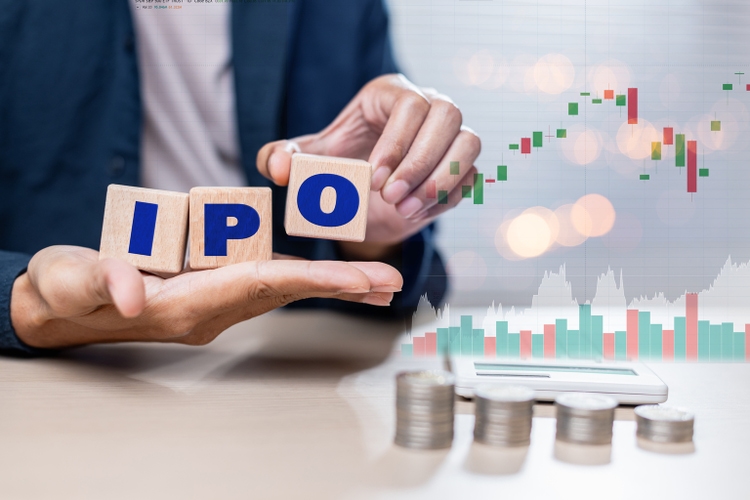Sumala Chidchoi/iStock via Getty Images
Listen below or on the go on Apple Podcasts and Spotify
Buy-now-pay-later company Klarna raised $1.37 billion with its IPO. (0:15) Wholesale inflation comes in cool. (2:11) GameStop cash pile more than doubles to $8.7 billion. (3:28)
This is an abridged transcript of the podcast:
Our top story so far, Klarna Group (NYSE:KLAR) stock opened at $52 in its debut on the NYSE today, more than 30% above its public offering price. Shares are trading under the ticker symbol KLAR.
The Swedish buy now, pay later financing firm raised $1.37 billion on Tuesday, pricing its IPO at $40 a share, above the expected range of $35-$37 each on strong demand from institutional investors.
That valued the company at about $15.1 billion, well below Klarna’s peak valuation of more than $45 billion back in 2021, when its BNPL service soared in popularity during the pandemic.
SA analyst David Trainer said a valuation around $15 billion is “far too expensive” as it “implies that Klarna will grow revenue at a 24% compounded annual growth rate while also significantly improving margins through 2032, an unlikely feat.”
Major red flags include internal control issues, minimal voting rights for new shareholders, and reduced disclosure requirements as a foreign issuer.
Among other active stocks, Chewy (CHWY) is tumbling as better-than-expected second quarter sales, coupled with lifted guidance for the year, were overshadowed by a lackluster bottom line that included a sizable drop in unadjusted earnings.
On a GAAP basis, to account for a $79.1 million compensation and tax-related expense, Chewy’s profit dropped 80% from a year ago to just $0.14 per share.
Synopsys (SNPS) is the biggest S&P decliner after weaker fiscal Q3 results and outlook.
Baird analyst Joe Vruwink said: “High expectations around Ansys and Design Automation fundamentals are being countered by material changes in Design IP outlook (China restrictions and customer behavior, challenges at major foundry customer, shifting roadmap/resourcing decisions as prior approach not yielding results).”
And The Trade Desk (TTD) is slumping after Morgan Stanley cut the stock to Equal Weight from Overweight.
Analysts expressed mounting concerns about the ad tech company’s connected TV business. They also said they have been wrong about the durability of the company’s growth in the face of lingering execution concerns, softness in the open web ad market and intensifying competition.
On the economic front, the market got a very dovish wholesale inflation report. The August Producer Price Index fell-0.1% M/M, compared with the +0.3% rise expected and the prior month’s +0.7% rise (revised from +0.9%).
The annual rise eased to +2.6% from +3.1% in July, which was revised from +3.3% That was well shy of the +3.3% consensus.
Core PPI, ex food and energy, also edged down -0.1% on an M/M basis, vs. +0.3% consensus and +0.7% in July (revised from +0.9%). Annually, the core measure was +2.8% in August, well below the +3.5% expected and the previous month’s +3.4% (revised from +3.7%).
Prices for final demand less food, energy and trade services gained 0.3% M/M in August, marking the fourth straight decrease. For the 12 months through August, though, the index climbed 2.8%, the largest 12-month rise since the 3.5% ascent in March.
Renaissance Macro Research says: “The PPI margins index fell 1.7% in August to its lowest level since April. This would tend to indicate weaker direct pass-through to consumer prices, with tariffs likely being absorbed by the firms themselves.”
Pantheon Macro economist Samuel Tombs notes: “Many of the PPI components that directly feed into the calculation of the core PCE deflator were relatively hot again in August.”
In other news of note, GameStop (GME) swung to an operating profit of $56 million in its fiscal Q2. But the showstopping number was its cash pile, which rose to $8.7 billion from $4.2 billion in Q1. GameStop’s market cap is less than $11 billion.
The company’s balance sheet rose by $4.5 billion, 80x more than it made actually selling stuff to customers. How did it achieve that? Almost entirely by selling debt. The retailer took in $4.15 billion from convertible notes. And could take in another $1.9 billion this quarter after announcing a special dividend in the form of warrants, with one warrant per 10 shares granting the right to buy shares at $32.
With a potential cash pile of $10 billion (possibility bigger than its market cap) what does it do with all the money?
SA analyst Florian Muller says at this point, “it remains completely unclear where GME is strategically headed with its ever-increasing cash pile.”
Buy crypto is one suggestion, as it already has more than $500 million in bitcoin (BTC-USD). It could also look at an acquisition. Watch this retail space.
And in the Wall Street Research Corner, Wells Fargo strategist Ohsung Kwon reiterated his bullish call on U.S. equities and expects the S&P 500 to reach 6,650 by year-end and 7,200 by the end of 2026. This outlook is guided by the firm’s Profits Rates Sentiment Macro framework, which signals a 9% return over the next 12 months.
“With the S&P 500 trading at 22x, we expect future returns to be more driven by EPS than multiples. In fact, the market has become increasingly earnings-driven,” Kwon said. “Over the past 12 months, 2/3 of the S&P 500’s return has been driven by forward. EPS growth, a stark contrast to the multiple-led market in 2022-23.”
The rally also depends on one factor, namely capex into artificial intelligence, but “as long as AI capex remains intact, the bull market should continue,” Kwon noted.
#Wall #Street #Lunch #Klarna #Shines #Strong #Market #Debut
